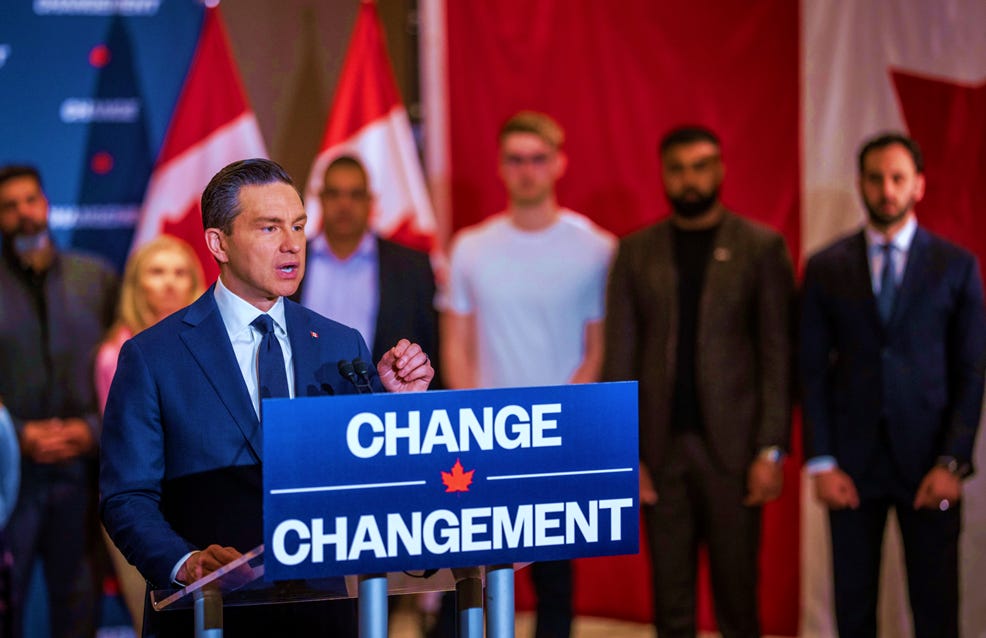Can the Conservatives Break Through in the GTA?
Exclusive polling from Pallas Data sheds light on the most decisive—and seat-rich—battleground of the federal campaign.
It’s no secret that the path to victory for both the federal Liberals and the Conservatives runs through the all-important Greater Toronto Area. Federally and provincially, ridings from Oakville to Mississauga, Brampton, Markham, and Ajax often determine the colour of the winner. To wit: over the past decade, both Justin Trudeau and Doug Ford owe much of their respective successes to these crucial suburban voters.
The 2025 federal election is no exception. Atlantic Canada leans red, and so does Quebec. Most of the Prairies will stay blue. Both the Liberals and Conservatives appear poised for modest gains in British Columbia. But for the Conservatives to close the gap meaningfully, there is no viable path without flipping the GTA.
This morning, we present an exclusive GTA poll conducted by Toronto-based firm Pallas Data to get a clearer picture of the state of the race with just one week to go before election day.
Let’s dig into these fresh numbers.
This analysis is based on a survey conducted by Pallas Data on April 16–17, 2025, among a sample of 816 eligible voters living in the Greater Toronto Area. This poll was commissioned by 338Canada.
Among all respondents, the Liberals receive 48% support—seven points ahead of the Conservatives, who stand at 41%. The NDP trails far behind in third place with just 5%.
Given the sample size, the Liberal lead is statistically significant. Moreover, this margin closely mirrors the eight-point gap the Liberals held over the Conservatives in the 2021 general election, using redistributed results on the new electoral map. While the NDP has lost much of its already modest support in the region, neither of the two leading parties appears to have significantly benefited from its collapse.
The Pallas report breaks down results by GTA sub-region (note that these subsamples carry higher margins of error and should be interpreted with caution). In both Peel and Durham regions, the Liberals enjoy identical 14-point leads over the Conservatives, 53% to 39%. In Halton, the race is tighter, with the Liberals ahead 50% to 43%. In York Region, it’s a dead heat: 45% for the Liberals, 43% for the Conservatives.
The gender gap seen in national polling is just as stark in the GTA. Among male respondents, the race is a statistical tie: 46% Conservative, 44% Liberal. Among women, however, the Liberals hold a commanding 16-point lead—53% to 37%.
The generational divide is also significant. While both parties are well within range of each other in the 18-34, 35-49, and 50-64 age brackets, the Liberals hold a crushing 37-point advantage among older voters: 66% LPC, 29% CPC.
Much has been written during this campaign about the favourability levels of Mark Carney and Pierre Poilievre. The Pallas survey included the classic question: “Do you have a favourable or unfavourable impression of...?”
While neither leader scored particularly well, Carney holds a clear edge.
Among all respondents, 46% view Carney favourably, while 44% hold an unfavourable opinion—yielding a net score of +2. Lukewarm, at best.
Poilievre, on the other hand, is viewed unfavourably by 54% of respondents and favourably by just 37%, for a net score of -17.
So while the race in the GTA remains relatively close—and not far off from the 2021 results—the Carney Liberals continue to hold the upper hand. If these Pallas numbers are reflected at the ballot box this weekend and on April 28, the Liberals should be well positioned to win most GTA seats—and with them, perhaps, the most seats from coast to coast.
Much more to come this week—stay tuned.
This Pallas Data poll was conducted from April 16 to 17, 2025, with a random sample of 816 Canadian respondents aged 18 and over living in the Toronto Greater Area. The data was collected by interactive voice response through telephone calls on landlines and cell phones. The survey was commissioned by 338Canada. The margin of error for the full sample is ±3.4%, 19 times out of 20. The full report of this poll can be found here.


